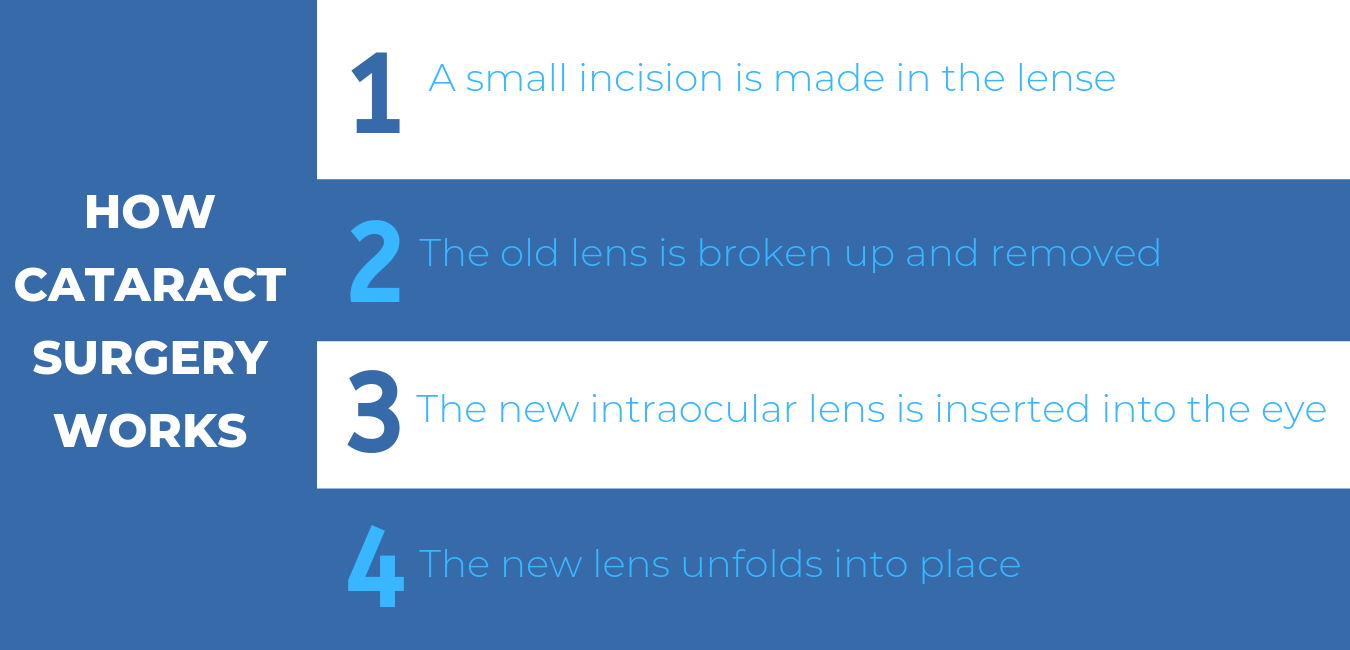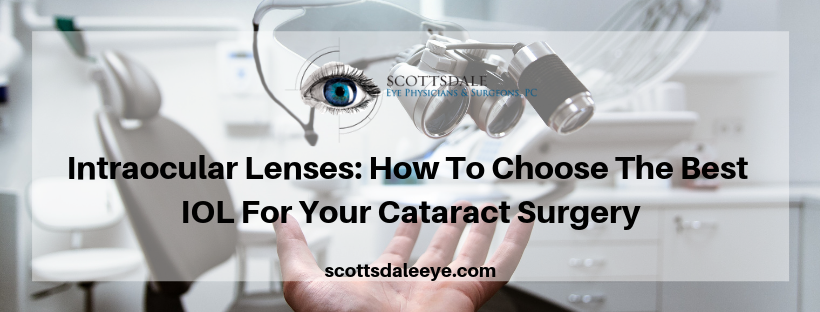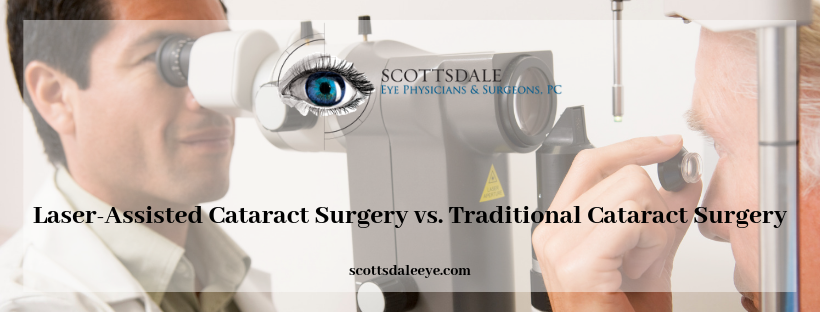
Cataracts occur naturally as the eyes age and a build up of protein causes a clouding of the eye’s lens. By age 65 more than 90% of all Americans either have a cataract or have had cataract surgery. Over time, the cataract may grow larger and cloud more of the lens, worsening vision. In addition, cataracts can result from exposure to toxic substances, diseases such as diabetes, or arise after an eye injury. A cataract can develop in one or both eyes and fortunately can be treated with a common and safe surgery.

The best way to know if you are a candidate for Cataract Surgery is to schedule a Free Consultation with our Cataract Counselor. During your consultation you will go over the common symptoms of Cataracts and you will fill out a lifestyle questionnaire. This questionnaire will help determine your next steps in scheduling a Cataract appointment with Dennis Kilpatrick, MD our surgeon.
When cataract surgery is performed the doctor removes the old damaged lens and replaces it with an new lens which is called an Intraocular lens. There are several different types of IOL’s that are designed to fit your lifestyle and help you see clearly after cataract surgery!

The most common type of lens used with cataract surgery is called a monofocal IOL. It has one focusing distance. It is set to focus for up close, medium range or distance vision. Most people have them set for clear distance vision. Expect to wear eyeglasses for reading or close work if needed.
As the name suggests multifocal IOL’s are used to fix vision at multiple distances. With this type of lens you can correct your vision up close and at a distance. Once cataract surgery is completed you will no only see clearly but will no longer need your reading glasses!
A Toric Lense is a speciality Intraocular lens that is designed to correct astigmatism in patients. An Astigmatism is cause when a persons cornea is irregularly shaped and can cause blurred vision at any distance. After Cataract surgery you will have crisp clear vision at one range.
The Light Adjustable Lens is made of a special photosensitive material that changes the shape and power of your implanted lens in response to ultraviolet (UV) light to optimize your vision.
The Light Delivery Device (LDD) non-invasively delivers this UV light to precisely reshape your lens based on the visual correction that is needed to target your custom prescription.
Cataract surgery over the past 50 years has changed dramatically what once was a lengthy procedure is now a quick, effective and life changing experience due to the femptosecond laser! The Femptosecond laser is able to perform the important steps of cataract surgery that normally were performed manually.

“I highly recommend Dr. Kilpatrick! I had cataract surgery on both of my eyes by Dr. Kilpatrick. Having severe issues with stigmatism I was concerned. I consulted with other Ophthalmologist in the area , however , I felt most comfortable with Dr. Kilpatrick as he was patient , caring , communicative and I have excellent results …which are life changing for me. His office , staff and the surgical center are also excellent and made the process a pleasant experience overall.”
Kathleen Rachael
“I feel the most important thing anyone can do for cataract surgery, is pick a good surgeon.. Dr. Kilpatrick is honestly a great surgeon.”
Martin Kornbluth
“I have been a patient here at Scottsdale Eye Physicians for many years. Dr. Dennis Kilpatrick has taken very good care of my vision AND did both of my cataract surgeries. My husband also uses this same eye specialist. The staff is always friendly and the atmosphere is warm and inviting. I totally trust Dr. Kilpatrick, who on occasion tells some really funny jokes.”
Kathy Harubin

Get the facts on choosing the best Intraocular lens for your lifestyle

Read more on why laser cataract surgery is beneficial
Scottsdale Eye Physicians & Surgeons proudly serves Scottsdale, Phoenix, Fountain Hills, Paradise Valley, Chandler,